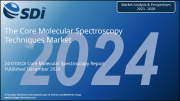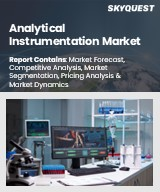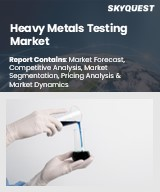
|
시장보고서
상품코드
1592141
핵심적 분자 분광법 시장Core Molecular Spectroscopy Techniques Market |
||||||
자외 가시 분광법, 근적외 분광법, 적외 분광법, 라만 분광법을 1차 및 2차 시장 분석의 관점으로부터 상세하게 평가하고 있습니다. 4개의 분자 분광 기술 각각의 시장 개요와 각 주요 분자 분광법의 이점과 한계를 상세하게 검증 하고 있습니다. 또한 각 분자 분광법의 2028년까지의 예측, 지역별, 분야별, 용도별, 사용 분야별 동향, 4개의 핵심적인 분자 분광법 각각의 원리와 경쟁 구도에 대해서도 정리하여 전해드립니다.
목차
서론
기술 개요
- 분자 분광법 개요
- 출판 동향
- 샘플 적용
시장 수요
- 핵심적 분자 분광법 전체
- 자외 가시 분광법
- 적외선 분광법(IR)
- 라만 분광법
- 근적외 분광법(NIR)
최종사용자 시점
- 인구통계
- 적외선 분광법(IR)
- 근적외 분광법(NIR)
- 자외 가시 분광법
- 라만 분광법
- 연구실 예산과 구입
- 동향
부록
KSA 25.01.13The "Core Molecular Spectroscopy Techniques Market" report provides an in-depth evaluation of UV/Vis, NIR, IR, and Raman spectroscopy from both a primary and secondary market analysis perspective. Each of the four molecular spectroscopy techniques has its own market brief and survey section. The content of this report is complementary to that of the SDi Global Assessment Report, which provides market information on the analytical and life science instrumentation industry.
The advantages and limitations of each core molecular spectroscopy technique are examined in detail through the secondary market analysis. The report includes market sizing for 2023, and forecasts through 2028 for each molecular spectroscopy technique. It features segmentations by region, sector, application, and area of use. It also describes the principles and competitive landscape for each of the four core molecular spectroscopy techniques. For example, UV/Vis spectroscopy measures light absorption in the ultraviolet and visible range, making it effective for concentration analysis. NIR spectroscopy analyzes molecular overtones in the near-infrared range, providing rapid, non-destructive material analysis. IR and Raman spectroscopy focus on molecular vibrations through different mechanisms. IR spectroscopy, which analyzes mid-infrared absorption, is essential for chemical fingerprinting in polymers, environmental testing, and quality control but is affected by water interference and complex sample analysis. Raman spectroscopy uses inelastic light scattering, to deliver high specificity with minimal sample preparation.
The primary analysis reveals the views of over 200 end users to an 80+ question survey. These end users work in three regions: North America, Europe, and Asia in the pharma/bio, industrial, applied, and academic end markets. The survey component of the report examines brand awareness, end user satisfaction, molecular spectroscopy purchasing plans, industry applications, offering a valuable resource for optimizing molecular analysis in research and industry.
Table of Contents
Introduction
- About This Report
- Methodology
- Regional Segmentations
- End Market & Sector Segmentation
- Function & Application
- Areas of Use
Technology Overview
- Molecular Spectroscopy Overview
- Publication Trends
- Sample Applications
Market Demand
- Core Molecular Spectroscopy Overall
- UV/Vis Spectroscopy
- Infrared Spectroscopy (IR)
- Raman Spectroscopy
- Near-Infrared Spectroscopy (NIR)
End User Perspectives
- Demographics
- Infrared Spectroscopy (IR)
- Near-Infrared Spectroscopy (NIR)
- UV/Vis Spectroscopy
- Raman Spectroscopy
- Lab Budget & Purchases
- Trends
Appendix
- End-User Questionnaire
- Recent and Upcoming Reports


















